Quick gamma/contrast test
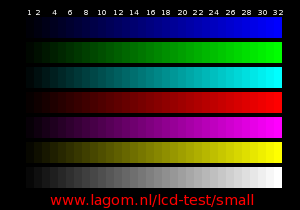
All color bars (from 1 to 32) should be visible and distinguishable from their neighbors.
Display settings
Your screen resolution should be at least 320x240 or the test images
won't fit. The color depth should be at least 24 bits or you may see
artifacts that are not related to the display quality per se.
![]()
Gamma calibration
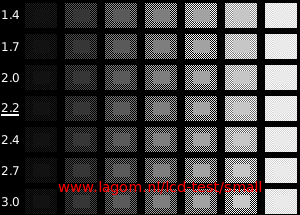
When viewed from a distance, the squares in the row labeled '2.2' should blend in. Note: the web browser should not resize the image or the test will be meaningless! On an iPod Touch, this image should cover about 2/3 of the screen width in landscape mode or 100% of the screen width in portrait mode. Use the zoom function if this is not the case. Note: I have no access to an iPod Touch. I would like to add clear instructions here how to make the iPod Touch display the images without scaling. If you know, please drop me a message: lcdtest at lagom dot nl.
Gradient test (banding test)
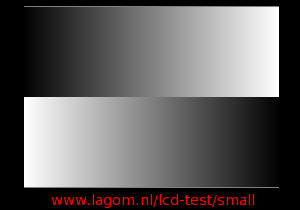
The gradient should make a smooth transition from almost black to bright white, without vertical lines or bands showing up.
Contrast test
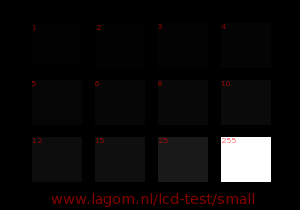
All squares (including number 1) should be discernible from (and lighter than) the black background, increasing numbers being brighter. Moreover, the squares should not have a color cast, i.e. appear bluish or reddish rather than pure grey. For measuring the actual contrast ratio (digital camera required), go to the contrast ratio page.
White saturation test
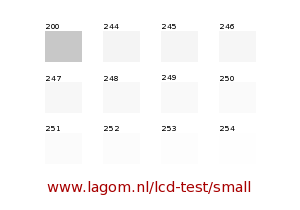
All squares should be discernible from the white background, and in increasing brightness.
Inversion test
Regular
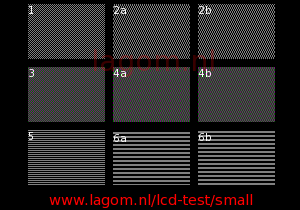
One of the patterns may flicker. The less flicker, the better. This test is meaningless if your browser resizes the image.
Sideways
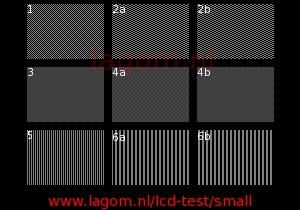
Same as above, but with the patterns rotated 90 degrees.
